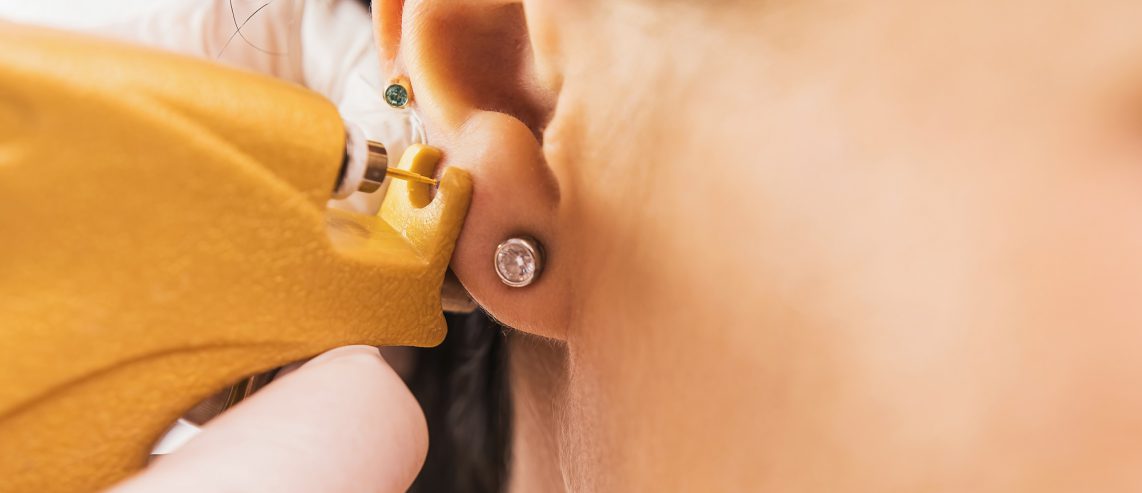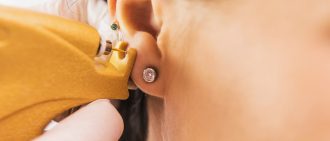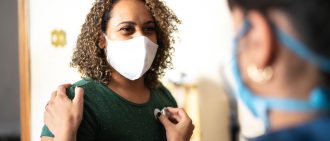You want to show off your piercing, but now it’s red, tender, and swollen. You may be wondering, “Is my piercing infected?”
Any piercing can become infected. Piercings outside the earlobe — in the ear cartilage, the belly button, or the nipple — are at a higher risk of infection.
Piercing infections can lead to abscesses. If the infected piercing is on the tongue, the condition can interfere with swallowing and speech.
Rarely, bacteria from a piercing infection can get into the bloodstream and threaten the heart or other organs in the body.
How Do I Know if My Piercing Is Infected?
For an early or minor infection, you may notice changes to the skin around the piercing. It might:
- Turn red or darker than your normal skin color.
- Feel warm.
- Become swollen.
- Feel tender.
- Be itchy.
Care for your infected piercing at home by cleaning the jewelry and the skin around it.
Use a sterile saline solution, which you can buy at a pharmacy. Doctors recommend against using rubbing alcohol as that can further irritate the skin.
Before cleaning the piercing, wash your hands well with soap and water and dry them with a clean towel. When cleaning the piercing, use a cotton swab (like a Q-tip®).
Let the piercing air dry. Avoid touching the piercing throughout the day, as this can add more bacteria.
If the piercing was new when it got infected, you need to clean it until the skin heals all the way. Healing can take six weeks for an ear lobe piercing and up to a few months for cartilage and other body piercings.
New Here - Living and Wellness
Is My Piercing Infected or Is It an Allergic Reaction?
It can be hard to distinguish between a minor infection and an allergic reaction. Avoid allergic reactions by staying away from metals that often cause allergic reactions.
The American Academy of Family Physicians recommends staying away from nickel and brass. Instead, opt for 14-carat gold or surgical-grade steel for your piercing stud.
If you’re unsure if your symptoms are due to an infection or allergy, make an appointment with your primary care provider. They will examine your piercing, ask you questions about it, and recommend the best course of action.
When Should I See A Doctor If My Piercing Is Infected?
If your minor piercing infection doesn’t start getting better within a few days, see your provider.
You’ll also want to see your provider if you experience any of the following symptoms:
- Major swelling.
- An abscess or pus-filled blister.
- Pus, which is a thick milky liquid that can be yellow or green.
- Pain beyond tenderness.
- Fever or chills.
If you have these signs of a more serious infection, you likely need medication to fight it off. If a serious skin infection goes untreated, it can spread to the blood in rare cases. A blood-borne infection can cause a person to feel very sick and can even lead to organ damage.
Never Miss a Beat!
Subscribe to Our HealthBeat Newsletter!
Thank you for subscribing!
You can now select the specific newsletters you'd like to receive.
You are already subscribed.
Subscribe to more newsletters in our email preference center.
Sorry, an error occurred. Please try again later.
Get Healthy Tips Sent to Your Phone!
How Is an Infected Piercing Treated?
Depending on the site of the piercing, and your symptoms, the doctor may prescribe antibiotics for an infected piercing. The antibiotic may come in the form of a topical cream that you apply to the area with clean hands. To prevent the infection from spreading, your doctor may recommend antibiotics you take by mouth.
Not all antibiotics are the same, so if you have antibiotics at home, don’t use them. The doctor will recommend the best type of antibiotic for your specific infection.
Also, it’s vital to take antibiotics as long as the doctor says. If you stop your treatment course before the recommended time, your infection could return.
Your doctor may need to take out the jewelry if you have a severe infection.
How To Avoid an Infected Piercing
Most infections happen in the first few weeks or months of having a piercing. An infection at the time of piercing could be from bacteria on the piercing tool, the jewelry, or the piercer’s hands. Bacteria can more easily enter a raw wound compared to healed skin.
To avoid infection during piercing, go to a reputable piercing business with sterile practices. The person doing the piercing should wash and dry their hands first and wear disposable gloves.
Your piercer should use either single-use tools or tools sterilized in an autoclave machine. It is also crucial that they use a new needle for each piercing. Or, for a piercing gun for an ear piercing, use a new, disposable cassette.
Once you’re home, wash your hands before touching your piercing. Follow the piercer’s instructions on cleaning the piercing until it’s healed.
Even old piercings can become infected. For example, bacteria on dirty jewelry, skin or hands can transfer to your piercing.
Editor's Note: This article was originally published on , and was last reviewed on .
Sources
About UPMC
Headquartered in Pittsburgh, UPMC is a world-renowned health care provider and insurer. We operate 40 hospitals and 800 doctors’ offices and outpatient centers, with locations throughout Pennsylvania, Maryland, New York, West Virginia, and internationally. We employ 4,900 physicians, and we are leaders in clinical care, groundbreaking research, and treatment breakthroughs. U.S. News & World Report consistently ranks UPMC Presbyterian Shadyside as one of the nation’s best hospitals in many specialties and ranks UPMC Children’s Hospital of Pittsburgh on its Honor Roll of America’s Best Children’s Hospitals. We are dedicated to providing Life Changing Medicine to our communities.












